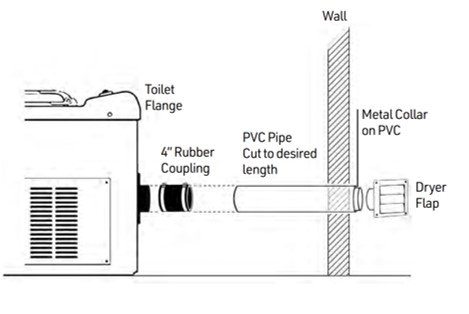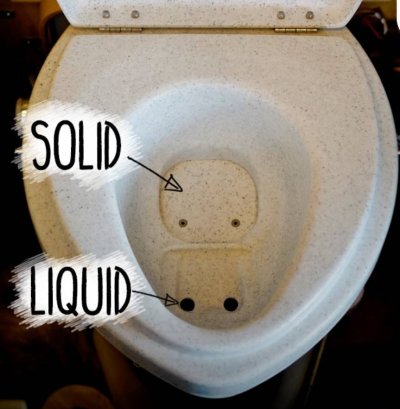We went with the Nature's Head on our previous boat, for the exact same reasons Peter did: reliability and simplicity.
During our six months living aboard, I did grow tired of the "ick factor" of emptying the poop compartment, even though it barely smelled.
However, I was also well aware that I was nostalgic for this aspect of land living: flush and it goes away. I had to remind myself that living aboard requires certain sacrifices. Living aboard is not a vacation.
In every way, I found the Nature's Head to be far less maintenance than our former Vacuflush heads on several previous boats. We purchased a second urine container for those situations when it was unseemly to empty the urine.
Before we sold the big boat, I was mulling other options, in particular the Marine Elegance (on Peggy's advice) or the Laveo, a.k.a. the "Jiffy Poop." The Jiffy Poop requires a weekly stop at a marina dumpster, so only workable for coastal cruising. But the Marine Elegance requires finding working pump-out stations.
Now that we are refitting a 24-ft trailerable camper boat, we are going to try the Laveo. It appears to be the toilet with the lightest "ick factor." And since we will only be cruising for short bursts of time, it appears to suit our needs. However, it does require a larger electrical supply than the tiny fan on the Nature's Head, so that adds some complexity and maintenance.
I'd love to see Laveo develop a urine-diverting head. I'm also well aware that we could end up switching out the Laveo for a Nature's Head, if the Laveo ever breaks. Any system on a boat that has reliability and simplicity built in is a big plus in my book.
Cheers,
Mrs. Trombley
During our six months living aboard, I did grow tired of the "ick factor" of emptying the poop compartment, even though it barely smelled.
However, I was also well aware that I was nostalgic for this aspect of land living: flush and it goes away. I had to remind myself that living aboard requires certain sacrifices. Living aboard is not a vacation.
In every way, I found the Nature's Head to be far less maintenance than our former Vacuflush heads on several previous boats. We purchased a second urine container for those situations when it was unseemly to empty the urine.
Before we sold the big boat, I was mulling other options, in particular the Marine Elegance (on Peggy's advice) or the Laveo, a.k.a. the "Jiffy Poop." The Jiffy Poop requires a weekly stop at a marina dumpster, so only workable for coastal cruising. But the Marine Elegance requires finding working pump-out stations.
Now that we are refitting a 24-ft trailerable camper boat, we are going to try the Laveo. It appears to be the toilet with the lightest "ick factor." And since we will only be cruising for short bursts of time, it appears to suit our needs. However, it does require a larger electrical supply than the tiny fan on the Nature's Head, so that adds some complexity and maintenance.
I'd love to see Laveo develop a urine-diverting head. I'm also well aware that we could end up switching out the Laveo for a Nature's Head, if the Laveo ever breaks. Any system on a boat that has reliability and simplicity built in is a big plus in my book.
Cheers,
Mrs. Trombley
Last edited:


